Unusual forms of ancient currency
Categories: World
By Pictolic https://pictolic.com/article/unusual-forms-of-ancient-currency.htmlMoney. Only with this word, people have a lot of feelings, thoughts and emotions. But would you agree to accept a bar of salt or a huge stone instead of the usual salary?
Since ancient times, people have attributed monetary value to various objects and used amazing objects of various shapes, sizes and formats as money. And while much of this so-called currency is already impractical and impractical today, it serves as an important reminder of what people in the past valued and why.
In this article, we will look at ten incredible examples that are completely different from what we call the usual word “money” today.
(Total 10 photos)
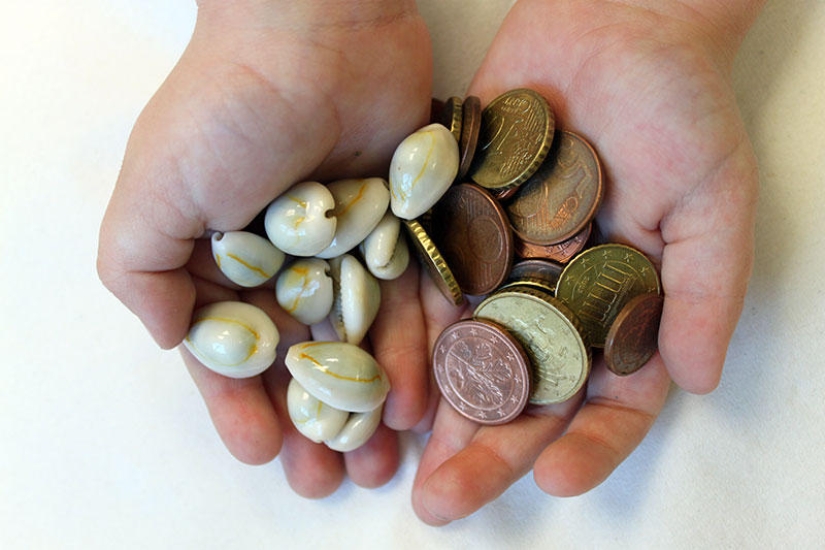

10 Dolphin Teeth
Probably the strangest and most terrible currency of antiquity is the teeth of dolphins, which were used in the Solomon Islands for several centuries, according to long traditions. In 2008, the dollar depreciated on the island. Local residents responded by hoarding money, which in turn led to a shortage of coins and further aggravated the situation. As a result of circumstances in some parts of the islands, people have decided to return to the traditional currency - dolphin teeth. Incredibly, the value of mammalian teeth has almost quadrupled. Local dolphin hunter Henry Sukufatu said: "The white man's money will run out sooner or later, but the teeth of dolphins will never."
In January 2013, local newspapers made headlines that the inhabitants of Malaita Island had ruthlessly killed 900 bottlenose dolphins because of a dispute with an environmental group. The islanders have confirmed that they have resumed their annual dolphin shooting after a US conservation organization failed to pay them the full agreed upon compensation for refusing to hunt marine mammals.

9. Squirrel skins
Since ancient times, fur skins have played an important role in exchange and trade. In medieval times, squirrel fur was considered the most valuable of all, which is why it became the accepted form of currency in Finland and Russia. Some believe that killing squirrels for money, by coincidence, saved a significant part of the Russian population from the bubonic plague. At that time, Russia used not only squirrel skins, but also the muzzles and claws of these animals. Presumably, in Finland, squirrel skins are still accepted as a means of payment, and they are also endowed with use and exchange value. Therefore, if you suddenly hear someone in Finland pronounce the words "squirrel skins", know that we can talk about money.
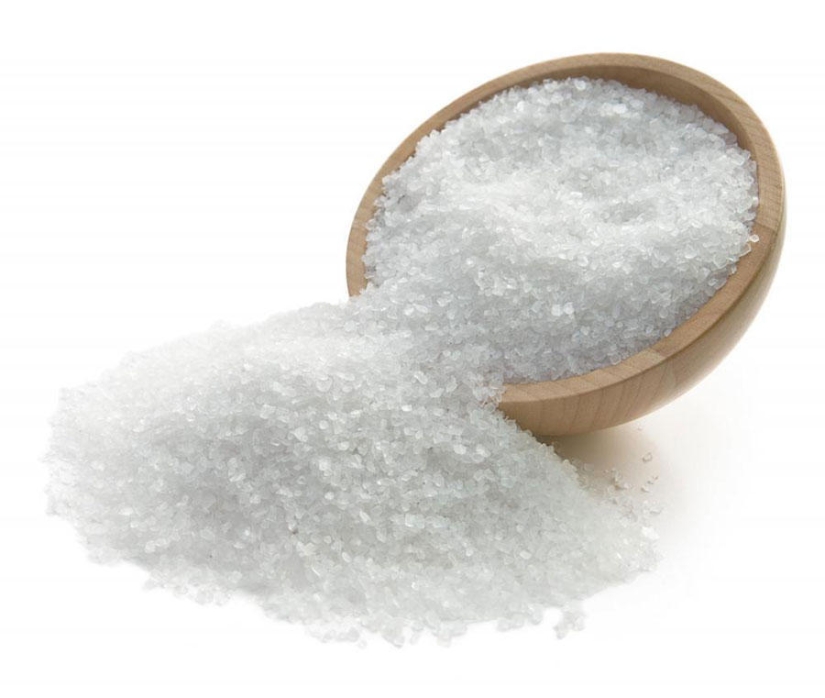
8. Salt
Salt has been considered a valuable commodity for thousands of years. She played a significant role in the development of early civilizations. It is mentioned in several important religious traditions and texts. In 2200 BC, the Chinese Emperor Yu the Great paid the first ever recorded tax payment in salt. The introduction of the salt tax was one of the causes of the French Revolution. The product itself also played an important role in the American Civil War. Moreover, in ancient Rome, soldiers were often paid for their service with salt. And even today, some nomadic peoples of Ethiopia use "white death" as their currency.
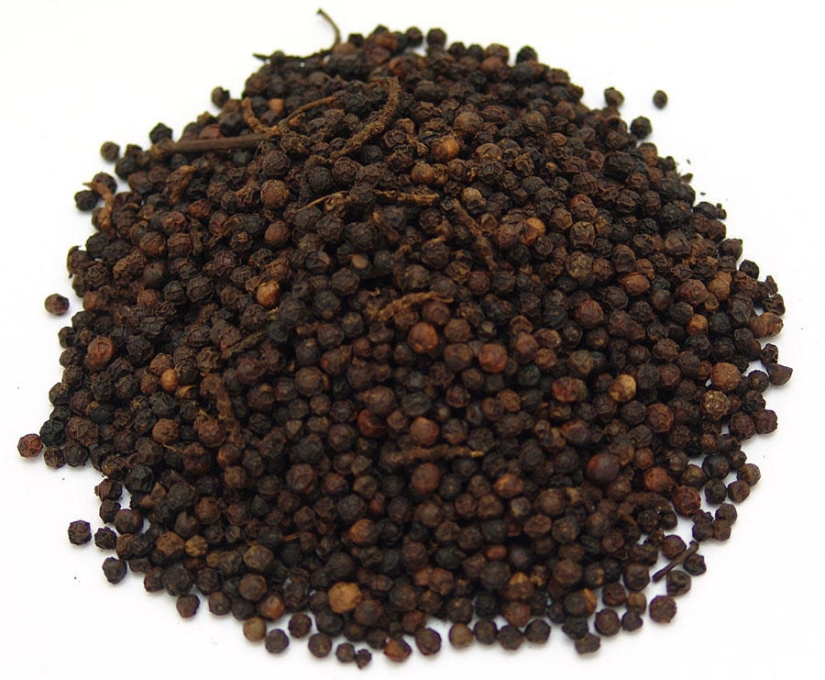
7. Black pepper
In ancient Greece, the scarcity of black pepper caused its unprecedented value. According to historical information, in the 5th century, the first king of the Visigoths, Alaric, and the leader of the Huns, Attila, captured Rome and demanded a huge amount of black pepper from the inhabitants of the city as a ransom.
In the Middle Ages, black pepper became the accepted form of currency. In the 15th century, the demand for spice in Europe increased so much that this fact played a huge role in the development of sea routes with the Far East. Due to the high cost, the spice was called "black gold" and until the 19th century it was considered a luxury that only very rich people could afford. Today, black pepper is the most widely used spice in the world.
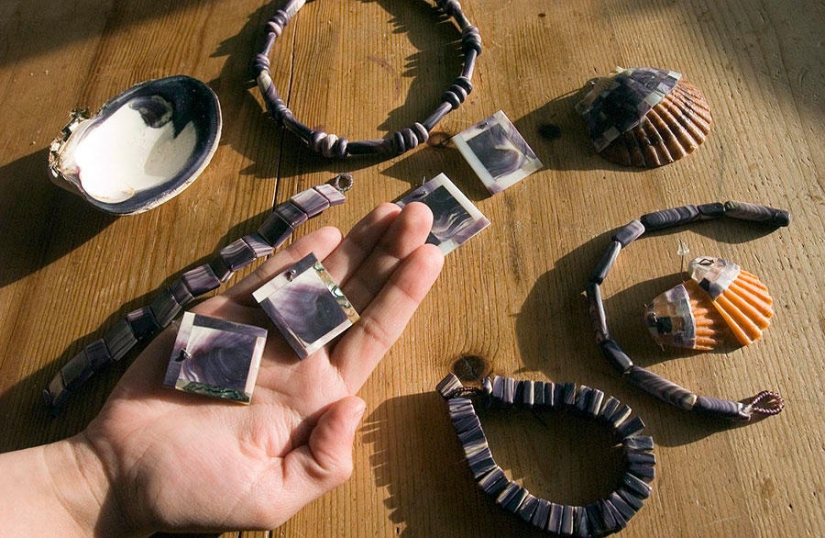
6. Wampum (beads)
The first currency of America was beads - in particular, wampum. These are traditional handmade beads made from white and purple gastropod and bivalve shells. When European settlers landed on the shores of North America in the 16th and early 17th centuries, they noticed that the natives had a special attitude towards wampums, considering them sacred and valuable objects. The colonists also found that the Native Americans were more willing to share much-needed supplies if they were offered wampums in exchange. So, shell necklaces became the official currency, although the representatives of the indigenous population of North America did not at all consider them as money. After some time, mass production of wampums began in European factories. However, shell beads were eventually withdrawn from circulation in the New England colonies in 1663 - although they remained legal tender in New York until the early 18th century; and some European factories continued wampum production until the early 1900s.
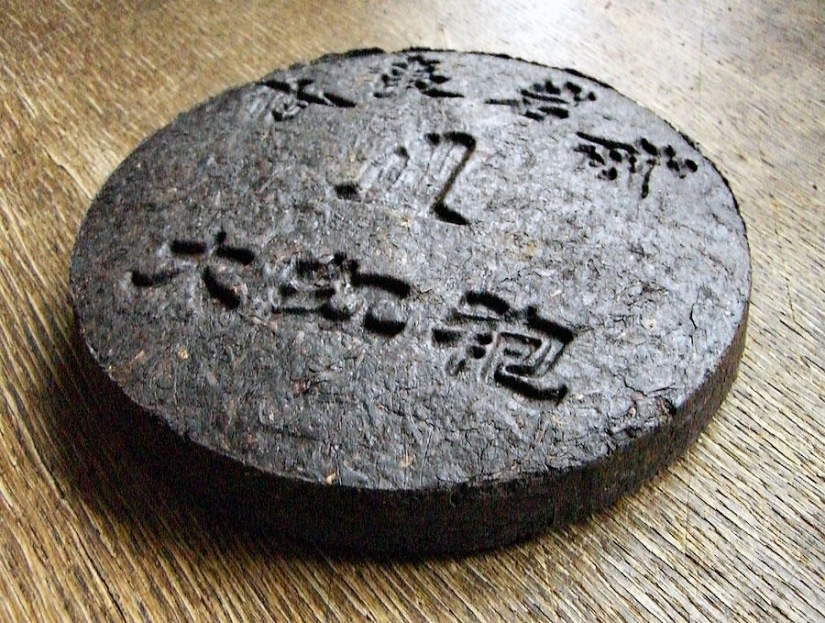
5. Tea bricks
Another amazing form of ancient currency was tea bricks. For the production of this valuable product, the stems and leaves of the tea bush were mixed with various herbs, and sometimes dry wood chips. Bricks were formed from the resulting mixture, bull's blood or droppings served as a binder. By tradition, Chinese characters were depicted on tea bricks or unique patterns and drawings were applied. In the 19th century, they began to be used as a currency in China, Russia, Tibet, Siberia and Mongolia. For 12 of these bricks you could buy one ram, for 20 you could buy a horse. In Siberia during the Second World War, tea bricks were eaten and also used as a medicine.
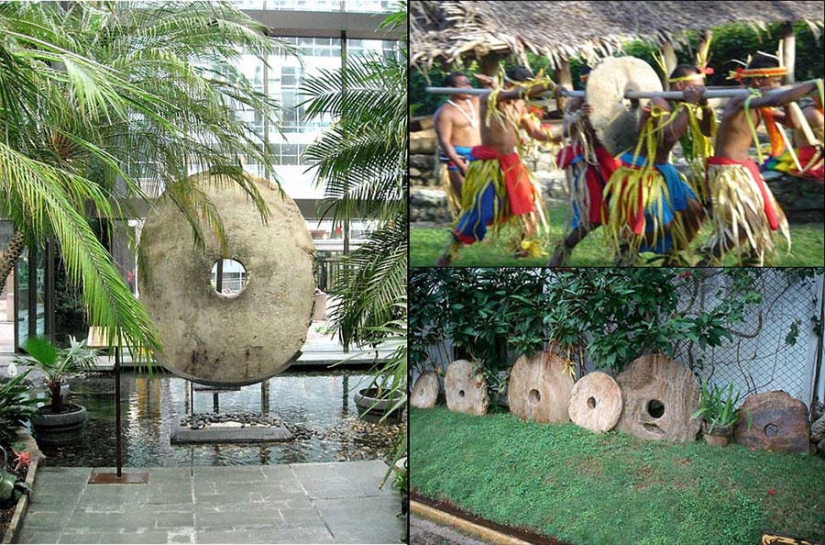
4. Rai Stones
For some, size may not matter, but not for the inhabitants of Yap Island (Micronesia). There is every reason to believe that they started creating their Rai stones as early as 500 AD. To make such an unusual form of currency, they needed limestone, which could only be found on the neighboring island of Palau. There they carved huge round discs with a hole in the center from stone and then transported them back to Yap. The diameter of some stones reached more than 3.5 meters, and the weight was over 4 tons. The cost of the stones was determined by the process of their manufacture - extremely dangerous, and sometimes even fatal. Once Rai stones were used as a means of payment, their location often remained unchanged. In fact, there was no need for a physical exchange, since everyone already knew who the Rai belonged to. The value of the stones declined with the advent of the Europeans, whose technology greatly facilitated the process of their manufacture. Today, Rai stones are involved in various rituals and rituals, and are also the national symbol of the Federated States of Micronesia.
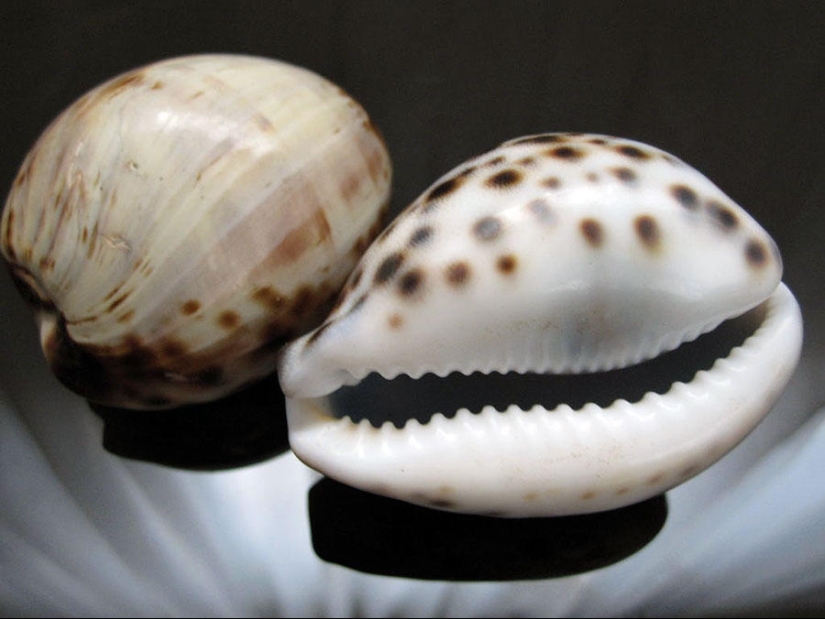
3. Cowrie shells
Cowrie shells (porcelain snail shells) are one of the earliest forms of ancient currency. They are small, light and strong, and very difficult to fake (although some people have managed to make fake cowrie shells out of materials such as horn, bone, lead, and even silver and gold). Cowries were also used to make stunning jewelry and ornaments. Cowrie shells were first used as a medium of exchange in China in the early 16th century BC. Later, this type of currency spread to the largest trading areas of Africa, Arabia, parts of Europe and Asia.
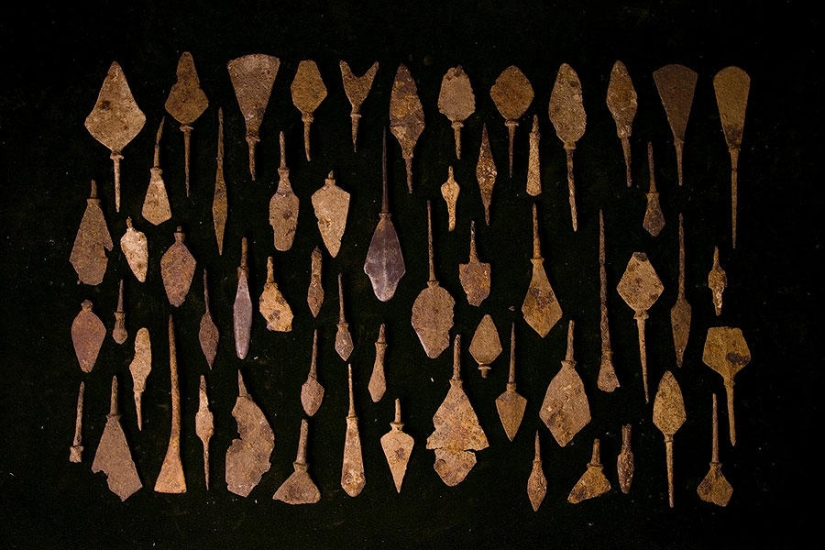
2. Arrowheads
This truly wonderful type of ancient currency originated in the northern part of the Black Sea. At the beginning of the 7th century, arrowheads began to be used as money in the territory known as Great Scythia, which covered the lands of modern Ukraine, Central Asia, Eastern Europe, the North Caucasus and part of Russia. Bronze tips appeared long before the usual ancient coins and were highly valued for their strength and ability to be used as weapons.
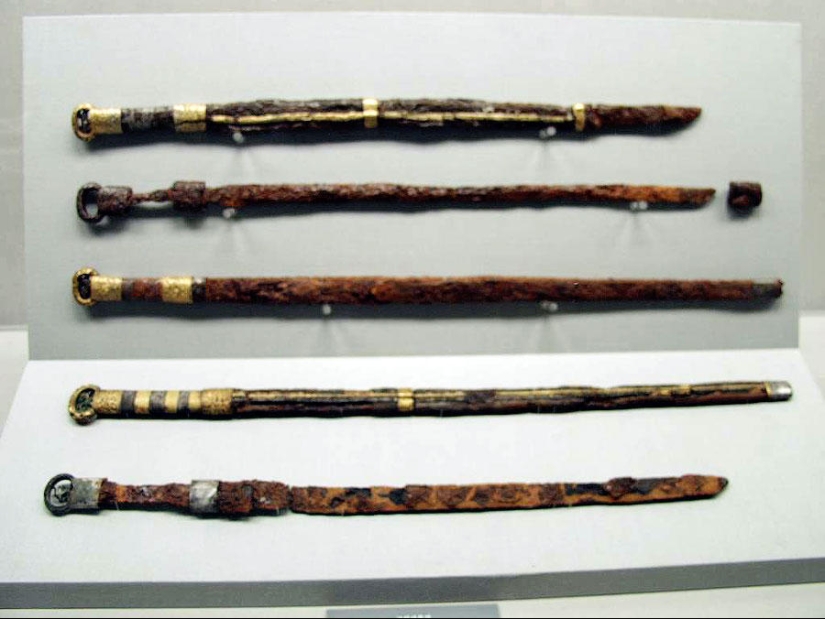
1. Knives
Like arrowheads, ancient Chinese knives were both weapons and currency. Money-knives are an indicator of what people valued at that time. This extraordinary currency first appeared in China around 600 BC, during the reign of the Zhou Dynasty. Historians believe that the knife-shaped coins were modeled after scraper knives used by nomadic hunters in the northern and eastern parts of the country. The money-knives were often scratched with numbers or individual words - for example, "sheep" or "fish" - which, most likely, determined the value of each individual coin. All coins also had an inscription indicating that they were the official currency. Knives were used as money for several hundred years until the first emperor of China, Qin Shi Huang, abolished this currency and announced that from now on, round coins with a square hole in the middle will be the only legal tender.
Keywords: Currency | Money | Antiquity | Payment
Post News ArticleRecent articles

Twitter user @FactBuffet collects interesting facts about everything. Today we bring to your attention another series of facts that ...

Aomori Prefecture in the north of the Japanese island of Honshu is an agricultural region famous for its delicious apples. In ...
Related articles

Now we can keep our savings in a bank or, if we don't trust financial institutions, put them in a safe and keep them at home. And ...

Millions of people around the world buy lottery tickets in the hope of winning a happy life. They dream of luxury cars, luxury ...

Many guests of the Island of Freedom, barely having time to set foot on Cuban soil, hear from the guides & # 8212; " Have time to ...

Imagine a baby vampire or a tiny zombie with glass eyes ... An artist from the USA Bean Shanine specializes in creating such ...